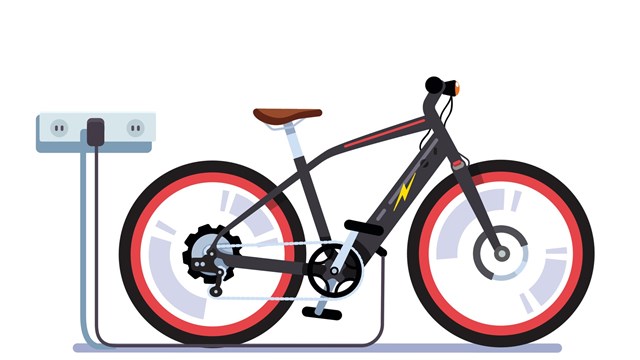Sometimes in the rush of excitement surrounding construction and renovation projects, things can get overlooked. Perhaps a cost goes unchecked or timing issues crop up. One item on the to-do list that should never be forgotten, though, is safety, both for residents and work crews.
Keeping residents, staff and work crews out of harm’s way is a manageable task, one that simply requires planning and diligence. Preparation, communication and common sense are keys to stopping problems before they start—and prevention is the best way to keep people safe.
Taking Precautions
For boards and managers, the well-being of their residents is no doubt at the top of the list when issues of safety are involved. It is important to remember, however, that the safety of the men and women building the decks, laying down new shingles or installing new windows is closely tied to the safety of the people who live in the buildings where that work is beingdone. In general, contractors who focus on safety for their employees are likelier to be on the lookout for residents as well.
“It goes to a general regard for people,” says Fred Schernecker of SPS, Inc., a Waltham, Massachusetts contractor that provides property maintenance and capital improvement services. “If it doesn’t bother you that an employee gets hurt, it won’t bother you if a resident does.” Workers at SPS, for example, are required to wear hard hats at all times when they’re working as well as safety glasses. All employees working on roof projects are required, too, to wear fall protection such as a harness and line. This goes beyond the usual requirements, but attention to safety not only saves lives, it also saves dollars. Companies that go the extra mile in terms of safety “are able to keep rates low because companies that care about safety aren’t paying higher pricesin insurance premiums or paying for lost days because of injuries,” says Schernecker. Ultimately, those savings can be passed on to the consumer.
Where Trouble Occurs
According to the U.S. Department of Labor’s Occupational Safety and Health Administration (OSHA), the most common situations that can pose a danger to construction employees include “falling object hazards and tripping hazards. (Employers also) must ensure the structural integrity and stability of scaffolds.” Organizations such as OSHA exist to ensure that certain safety standards are met on the job site. “There are OSHA construction standards that address each of these (issues listed above),” according to Sharon Worthy from the U.S. Department of Labor’s Office of Public Affairs. “For example, regarding falling object hazards, the construction scaffold standard requires that employers provide a means of preventing objects from falling from above. Toeboards onscaffolds, debris nets or barricading falling object hazard areas are typical protective methods.”
And although OSHA does not speak to matters of resident safety, it is a logical conclusion that safety standardsthat protect work crews from falling objects and other hazards will help prevent injury to “civilians.”
Other trouble areas include problems on the ground: people tripping on materials or debris or stepping on nailsor other sharp objects. When decks are being replaced, too, accidents can happen if doors to those decks are not properly sealed shut or people don’t know that work is being done on that deck.
Some projects involve chemicals or other potentially hazardous materials. “We do a lot of caulking and waterproofing,” says Thom Poindexter of Abbot Building Restoration Co., Inc., located in Boston, Massachusetts. “Some of the products we use may contain hazardous chemicals. On most projects where there is an architect, engineers or even just a property manager, we furnish them specifications on what products we will be using and an MSDS (Materials Safety Data Sheet) detailing any and all hazards and what to do if anything happens with that particular chemical.”
If management does not like the way a project is being done and suspects that safety precautions or regulations are being disregarded, they should speak up, Schernecker says. “If management is aware that a contractor is not doing something safely, it’s their responsibility to say something or it could come back at them later.” Preventing problems before they happen can not only save lives, it also can save a lot of potential trouble later in terms of liability issues.
Often, “saying something” means calling enforcement officials such as OSHA, who are equipped to handle potential infractions. “OSHA’s enforcement program is designed to target its enforcement efforts where serious hazards are most likely to be present, such as construction sites,” Worthy writes. “The compliance officer focuses primarily on conditions that relate to the four leading causes of construction employee fatalities: falls, struck-by hazards, crushed-by hazards and electrocution. When violations of OSHA requirements are found, OSHAissues citations and penalties to the employer.”
Protecting the People
Communicating the type and extent of a renovation or construction projectcan go a long way toward keeping residents safe. “The best precaution is keeping everyone informed of exactly what is going to be done how and when,” says Poindexter.
Schernecker agrees. “The more notice, the better,” he says. “And the more frequent that notice, the better. Sometimes residents will ignore notices or not see them so you have to let them know with e-mails, fliers, door hangers, anything that might get their attention.”
Posting notices around the constructionsite as well as visible signs that work is taking place also will help keep people safe. “You don’t want people walking through work areas, so you want to put up barricades,” Schernecker says. Also, “if you’re working on the outside of a building, you’ll want to make sure that people leaving the building during the day are notified.”
Poindexter concurs. “If we’re working on the upper floors or a façade with brick, tools and equipment, people should be aware and look out for any falling debris, bricks or whatever. If there are construction barriers markingoff an area where people should not go, people should stay away to avoid anything from a trip hazard to other serious injury or even death.”
Management also will want to make sure that contractors are using the proper safety set-ups to protect residents. “If, for instance, a contractor is restoring a front façade of a masonry structure requiring erection of staging, the frontentrance is usually right there and a contractor would then use some sort of overhead pedestrian protection to protect everyone from anything that may fall off the building or staging,” Poindexter says.
Unit owners also might have concerns about inconveniences such as noise or dust. “So a contractor may have to arrange to use new dustless technologies to prevent dust from getting all over and into everything,” Poindexter says. “And in so far as equipment may causenoise, usually there would be an agreement with the contractor to perform that kind of work only between certain hours.”
Overall, the contractor is usually responsible for ensuring the safety of both workers and residents. “There should be the expectation that the contractor should take care of protection,” Schernecker says. “A discussion of safety practices will happen with the management if it’s an unusual project such as any situations with overhead electrical wires.”
That does not mean management should not stay involved. Constant lines of communication, ensuring that all permits have been requested and received, asking questions about insurance and just generally keeping one’s eyes open are imperative for managers who want to keep the project moving smoothly and everyone involved safe and sound. “Larger projects usually also involve architects and engineers and require regular project meetings where all parties meet to discuss and resolve every issue to the satisfaction of everyone,” adds Poindexter. “Trustees and boards and property managers should then be sure to get information out to residentsin a timely manner.”
Personal Responsibility
As much as contractors and management can do to ensure safety, residents should remember that they are responsiblefor protecting themselves, their families and their children as well. They need to take warnings, postings and notices seriously and steer clear of all marked areas. “They should stay out of work areas,” Schernecker says. “If they see someone wearing a hard hat, don’t go into that area without a hard hat. They need to follow signs. And they should encourage management to hire contractors who care about safety.”
“Renovation or restoration of structures is in everyone’s best interests and residents are an important part of the team to get this done,” Poindexter says. “Residents should first and foremost be aware of what’s going on. Sometimeswork may affect things like where you can and cannot park your car. Or, for example, if your balcony decks are going to be restored, residents should take steps to clear furniture, plants or other things off their balconies. If the work involves masonry cleaning or pressure-washing, especially with chemicals, people should make sure their windows are closed.” Mostly, Poindexter says, people should just use “common sense.”
Renovations, restorations and new construction projects are always an exciting and stressful time for condo owners and management. With the proper amount of preparation, communication and common sense, though, they also can be safe times.
Liz Lent is a freelance writer with New England Condominium magazine.







Leave a Comment